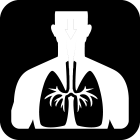 Likely to cause
Likely to cause
 Can cause
Can cause
 May cause
May cause
Styrene
CAS: 100-42-5
How can this chemical affect my health?
Acute (Short Term) Effects

Skin Irritation – Irritation or serious damage to the skin.

Eye Irritation – Irritation or serious damage to the eyes.

Toxic to Humans & Animals – Toxicity or fatality on contact, ingestion or inhalation to humans and other mammals.
Data sources
Direct Hazard » Skin Irritation
These sources refer directly to this chemical:
- H315 - Causes skin irritation [Skin corrosion/irritation - Category 2]EU - GHS (H-Statements) Annex 6 Table 3-1European Union / European Commission (EU EC)
- Skin irritation category 2GHS - New ZealandTe Mana Rauhī Taiao (Aotearoa New Zealand EPA)
- H315 - Causes skin irritation [Skin corrosion / irritation - Category 2]GHS - JapanGovernment of Japan
- H315 - Causes skin irritation [Skin corrosion/irritation - Category 2]GHS - MalaysiaMalaysia Department of Occupational Safety and Health
- H315 - Causes skin irritation [Skin corrosion/irritation - Category 2]GHS - AustraliaSafe Work Australia
Direct Hazard » Eye Irritation
These sources refer directly to this chemical:
- H319 - Causes serious eye irritation [Serious eye damage/eye irritation - Category 2A]EU - GHS (H-Statements) Annex 6 Table 3-1European Union / European Commission (EU EC)
- Eye irritation category 2GHS - New ZealandTe Mana Rauhī Taiao (Aotearoa New Zealand EPA)
- H319 - Causes serious eye irritation [Serious eye damage / eye irritation - Category 2A]GHS - JapanGovernment of Japan
- H319 - Causes serious eye irritation [Serious eye damage/eye irritation - Category 2A]GHS - MalaysiaMalaysia Department of Occupational Safety and Health
- H319 - Causes serious eye irritation [Serious eye damage/eye irritation - Category 2A]GHS - AustraliaSafe Work Australia
Direct Hazard » Toxic to Humans & Animals
These sources refer directly to this chemical:
- H332 - Harmful if inhaled [Acute toxicity (inhalation) - Category 4]EU - GHS (H-Statements) Annex 6 Table 3-1European Union / European Commission (EU EC)
- H332 - Harmful if inhaled [Acute toxicity (inhalation: vapor) - Category 4]GHS - JapanGovernment of Japan
- H332 - Harmful if inhaled [Acute toxicity (inhalation) - Category 4]GHS - MalaysiaMalaysia Department of Occupational Safety and Health
- H332 - Harmful if inhaled [Acute toxicity (inhalation) - Category 4]GHS - AustraliaSafe Work Australia
- H336 - May cause drowsiness or dizziness [Specific target organ toxicity - Single exposure - Category 3 (Narcotic effects)]GHS - JapanGovernment of Japan
- Acute inhalation toxicity category 3GHS - New ZealandTe Mana Rauhī Taiao (Aotearoa New Zealand EPA)
- Acute oral toxicity category 4GHS - New ZealandTe Mana Rauhī Taiao (Aotearoa New Zealand EPA)
Chronic (Long Term) Effects

Allergen/Asthmagen – Immune system responses that result in respiratory health effects that occur with increased sensitivity to lower and lower exposures over time.

Cancer – Increased cancer risk.

Endocrine Disruption – Interference with the endocrine system, which plays a crucial role in metabolism, development, growth, reproduction and behavior.

Reproductive Harm – Disruption of the male or female reproductive systems, changing sexual development, behavior or functions, decreasing fertility, or resulting in loss of the fetus during pregnancy.

Birth Defects – Harm to the developing child including birth defects, low birth weight and biological or behavioral problems that appear as the child grows.

Other Health Effects – Can cause serious damage on contact or ingestion.

Gene Damage – Increases in the rate of mutations, which are changes in genetic material in cells.

Brain/Nervous System Harm – Damage to the nervous system including the brain.
Data sources
Direct Hazard » Allergen/Asthmagen
These sources refer directly to this chemical:
- Asthmagen (A) - expert listed pending AEOC reviewAOEC - AsthmagensAssociation of Occupational and Environmental Clinics (AOEC)
- Asthmagen (Rs) - sensitizer-inducedAOEC - AsthmagensAssociation of Occupational and Environmental Clinics (AOEC)
- Asthma - allergen, sensitizer - limited evidenceCHE - Toxicant DatabaseCollaborative on Health and the Environment (CHE)
- Agent Causing Occupational AsthmaQuebec CSST - Asthma AgentsQuébec Workplace Health and Safety Commission (Commission de la santé et de la securite du travail (CSST))
Direct Hazard » Cancer
These sources refer directly to this chemical:
- Group 2A - Agent is probably Carcinogenic to humansIARCInternational Agency for Research on Cancer, World Health Organization (IARC)
- CarcinogenCA EPA - Prop 65California Environmental Protection Agency (CA EPA)
- Reasonably Anticipated to be Human CarcinogenUS NIH - Report on CarcinogensUS Department of Health & Human Services - National Institutes of Health (US NIH)
- Carcinogen Group 5 - Genotoxic carcinogen with very slight risk under MAK/BAT levelsMAKMAK Commission of Germany (Deutsche Forschungsgemeinschaft)
- Carcinogenicity category 2GHS - New ZealandTe Mana Rauhī Taiao (Aotearoa New Zealand EPA)
- H350 - May cause cancer [Carcinogenicity - Category 1B]GHS - JapanGovernment of Japan
- Possible carcinogen - TSCA Criteria metUS EPA - PPT Chemical Action PlansUS Environmental Protection Agency (US EPA)
Direct Hazard » Endocrine Disruption
These sources refer directly to this chemical:
- Category 1 - In vivo evidence of Endocrine Disruption ActivityEU - Priority Endocrine DisruptorsEuropean Union / European Commission (EU EC)
- Endocrine DisruptionChemSec - SIN ListChemSec, The International Chemical Secretariat
- Potential Endocrine DisruptorTEDX - Potential Endocrine DisruptorsThe Endocrine Disruption Exchange (TEDX)
Direct Hazard » Reproductive Harm
These sources refer directly to this chemical:
- Clear Evidence of no Adverse Effects - Reproductive ToxicityUS NIH - Reproductive & Developmental MonographsUS Department of Health & Human Services - National Institutes of Health (US NIH)
- Reproductive toxicity category 2GHS - New ZealandTe Mana Rauhī Taiao (Aotearoa New Zealand EPA)
- H360 - May damage fertility or the unborn child [Toxic to reproduction - Category 1B]GHS - JapanGovernment of Japan
- Reproductive Toxicity - Category 2EU - Annex VI CMRsEuropean Union / European Commission (EU EC)
Direct Hazard » Birth Defects
These sources refer directly to this chemical:
- H361d - Suspected of damaging the unborn child [Reproductive toxicity - Category 2]EU - GHS (H-Statements) Annex 6 Table 3-1European Union / European Commission (EU EC)
- Pregnancy Risk Group CMAKMAK Commission of Germany (Deutsche Forschungsgemeinschaft)
- H361d - Suspected of damaging the unborn child [Reproductive toxicity - Category 2]GHS - AustraliaSafe Work Australia
Direct Hazard » Other Health Effects
These sources refer directly to this chemical:
- H372 - Causes damage to organs through prolonged or repeated exposure [Specific target organ toxicity - repeated exposure - Category 1]EU - GHS (H-Statements) Annex 6 Table 3-1European Union / European Commission (EU EC)
- H372 - Causes damage to organs through prolonged or repeated exposure [Specific target organs/systemic toxicity following repeated exposure - Category 1]GHS - JapanGovernment of Japan
- H370 - Causes damage to organs [Specific target organs/systemic toxicity following single exposure - Category 1]GHS - JapanGovernment of Japan
- H335 - May cause respiratory irritation [Specific target organ toxicity - single exposure; Respiratory tract irritation - Category 3]GHS - AustraliaSafe Work Australia
- H372 - Causes damage to organs through prolonged or repeated exposure [Specific target organ toxicity - repeated exposure - Category 1]GHS - AustraliaSafe Work Australia
- H335 - May cause respiratory irritation [Specific target organ toxicity - Single exposure - Category 3]GHS - JapanGovernment of Japan
- Specific target organ toxicity - repeated exposure category 1GHS - New ZealandTe Mana Rauhī Taiao (Aotearoa New Zealand EPA)
Direct Hazard » Gene Damage
These sources refer directly to this chemical:
- Germ cell mutagenicity category 2GHS - New ZealandTe Mana Rauhī Taiao (Aotearoa New Zealand EPA)
- H341 - Suspected of causing genetic defects [Germ cell mutagenicity - Category 2]GHS - JapanGovernment of Japan
- H341 - Suspected of causing genetic defects [Germ cell mutagenicity - Category 2]GHS - AustraliaSafe Work Australia
Direct Hazard » Brain/Nervous System Harm
These sources refer directly to this chemical:
- H336 - May cause drowsiness or dizziness [Specific target organ toxicity - single exposure; Narcotic effects - Category 3]GHS - AustraliaSafe Work Australia
Inherent Hazards

Restricted List – This chemical is on a list from an authoritative body recommending that its use be avoided.

Flammable – Easily ignited and capable of burning rapidly.

Reactive – May spontaneously ignite or explode on its own or in contact with water.
Data sources
Direct Hazard » Restricted List
These sources refer directly to this chemical:
- Cancer causing substances subject to workplace management or avoidanceUS OSHA - CarcinogensUS Department of Labor
- HAPs subject to the Clean Air ActUS EPA - Hazardous Air PollutantsUS Environmental Protection Agency (US EPA)
- Precautionary list of substances recommended for avoidanceP&W - Precautionary ListPerkins+Will (P+W)
- Chemicals of high concernSCHF - Hazardous 100Toxic-Free Future (formerly Safer Chemicals, Healthy Families (SCHF))
- Priority Asthmagen to AvoidHabitable - Priority AsthmagensHabitable (formerly HBN)
- Candidate Chemical ListCA SCP - Candidate ChemicalsCalifornia Department of Toxic Substance Control (CA DTSC)
- Assessment of regulatory needsEU - PACT-RMOA SubstancesEuropean Union / European Commission (EU EC)
- V3 2014 Substance of Concern ListBIFMA - e3/level Annex B list of chemicalsBusiness and Institutional Furniture Manufacturers Association (BIFMA)
- Some SolventsGSPI - Six Classes Precautionary ListGreen Science Policy Institute (GSPI)
- Chemicals of High ConcernME DEP - Chemicals of High Concern and Priority ChemicalsMaine Department of Environmental Protection
- Chemicals of High ConcernMDH - Chemicals of High Concern and Priority ChemicalsMinnesota Department of Public Health
- Chemicals of High Concern to ChildrenWA DoE - Chemicals of High Concern to ChildrenWashington State Department of Ecology (WA DOE)
- Annex II - Prohibited SubstancesEU - Cosmetics RegulationEuropean Union / European Commission (EU EC)
- Designated ChemicalCA DTSC - Biomonitoring California Chemical ListCalifornia Department of Toxic Substance Control (CA DTSC)
- CoHC List (non SVHC)CPA - Chemical FootprintClean Production Action (CPA)
- Children's ProductsC2C Certified v4.0 Product Standard Restricted Substances List (RSL) - Effective July 1, 2022Cradle to Cradle Products Innovation Institute (C2CPII)
- 2019 Substance of Concern ListBIFMA - e3/level Annex B list of chemicalsBusiness and Institutional Furniture Manufacturers Association (BIFMA)
- Tier 1 “Do Not Use Chemicals” for EveryoneCampaign for Safe Cosmetics’ Red List of Chemicals of ConcernCampaign for Safe Cosmetics
- Restricted Chemicals - see Credo for potential source/use restrictionsCredo Beauty's Restricted Substance ListCredo
- Limit standard for volatile organic compounds content in printing inks (GB 38507-2020)China's limit standard for volatile organic compoundsState Administration for Market Regulation - Standardization Administration of China
- Chemicals of High Concern to ChildrenVermont Chemicals of High Concern to ChildrenVermont Environmental Health Division
- Reportable ChemicalsMA Toxics Use Reduction Act (TURA) listed substancesMassachusetts Department of Environmental Protection
- Food Contact Chemicals Database Version 5.0Food Contact Chemicals Database (FCCdb)Food Packaging Forum
- Food Contact Chemicals of Concern List (FCCoCL) - TIER 2Food Contact Chemicals of Concern (FCCoCL)Food Packaging Forum
- FSAP Food Packaging Product Stewardship ConsiderationsFSAP Food Packaging Product Stewardship ConsiderationsFood Safety Alliance for Packaging (FSAP)
- FPF Priority Substance List from FCCdbFPF Priority Substance List from FCCdbFood Packaging Forum
- Other Chemicals of ConcernGreenScreen Certified Standard for Food Service Ware RSLClean Production Action (CPA)
- Food Packaging Forum Priority Substances ListGreenScreen Certified Standard for Food Service Ware RSLClean Production Action (CPA)
- TSCA Commercially ActiveTSCA Chemical Substance Inventory (Active-Inactive)US Environmental Protection Agency (US EPA)
- Other AFIRM Substance GroupsAFIRM Packaging RSLThe Apparel and Footwear International RSL Management Group (AFIRM)
- GADSL Declarable Substances - Information is being collected for a non-regulatory purpose (D/FI)Global Automotive Declarable Substance List (GADSL)Global Automotive Stakeholder Group (GASG)
- GreenScreen LT-1 (based on 2018 Chemical Footprint Project)GreenScreen Certified Standard for Medical Supplies & Devices Silver-Gold RSLClean Production Action (CPA)
- Tier 1 “Do Not Use” Chemicals of Greater Concern for Black WomenCampaign for Safe Cosmetics’ Red List of Chemicals of ConcernCampaign for Safe Cosmetics
- Potential ACUTE health effects (sudden or short-term)OR OHA - High Priority Chemicals of Concern for Children's Health (HPCCCH)Oregon Health Authority
- Potential CHRONIC health effects (over time or long-term)OR OHA - High Priority Chemicals of Concern for Children's Health (HPCCCH)Oregon Health Authority
- Reportable Substances and Future Restrictions in ProductsApple Regulated Substances SpecificationApple Inc.
- New Zealand Inventory of Chemicals (NZIoC)New Zealand Inventory of ChemicalsTe Mana Rauhī Taiao (Aotearoa New Zealand EPA)
- The Australian Inventory of Industrial ChemicalsThe Australian Inventory of Industrial ChemicalsAustralian Government
- Existing Chemicals ListKorea Existing Chemicals ListKorea Ministry of Environment
- Philippine Inventory of ChemicalsPhilippine Inventory of ChemicalsThe Philippine Government
- DSL-allEC - CEPA DSLEnvironment Canada & Health Canada (EC)
- Taiwan Existing Chemical Substance InventoryTaiwan Existing Chemical Substance InventoryTaiwan Ministry of Environment
- TSCA - Substantial Risk NoticesTSCA Chemical Substantial Risk NoticesUS Environmental Protection Agency (US EPA)
- NICNASAustralia - National Industrial Chemicals Notification and Assessments (NICNAS)Australian Government
- Priority ChemicalsMind the Store Priority Chemical Classes & GroupsToxic-Free Future (formerly Safer Chemicals, Healthy Families (SCHF))
- Cosmetics and Personal Care ProductsC2C Certified v4.1 Product Standard Restricted Substances - Effective July 1, 2025Cradle to Cradle Products Innovation Institute (C2CPII)
- Japan - CSCLJapan - Chemical Substances Control LawGovernment of Japan
- Trade Union Priority List 2.0ETUC - Trade Union Priority List 2.0European Trade Union Confederation (ETUC)
- CSCP - Reportable Ingredient ListCalifornia Safe Cosmetics Program - Reportable Ingredient ListCalifornia Department of Public Health (CDPH)
- VOCsAFIRM Packaging RSLThe Apparel and Footwear International RSL Management Group (AFIRM)
- Data generation and assessmentEU - PACT-RMOA SubstancesEuropean Union / European Commission (EU EC)
- Regulatory risk managementEU - PACT-RMOA SubstancesEuropean Union / European Commission (EU EC)
Direct Hazard » Flammable
These sources refer directly to this chemical:
- H226 - Flammable liquid and vapour [Flammable liquids - Category 3]EU - GHS (H-Statements) Annex 6 Table 3-1European Union / European Commission (EU EC)
- Flammable liquids category 3GHS - New ZealandTe Mana Rauhī Taiao (Aotearoa New Zealand EPA)
- H226 - Flammable liquid and vapour [Flammable liquids - Category 3]GHS - JapanGovernment of Japan
- H226 - Flammable liquid and vapour [Flammable liquids - Category 3]GHS - MalaysiaMalaysia Department of Occupational Safety and Health
- H226 - Flammable liquid and vapour [Flammable liquids - Category 3]GHS - AustraliaSafe Work Australia
Direct Hazard » Reactive
These sources refer directly to this chemical:
- [Self-reactive substances and mixtures - Type G]GHS - JapanGovernment of Japan
How does this chemical impact the environment?

Acute Harm to Aquatic Ecosystems – Biological harm or possible death to fish or other aquatic organisms following a single exposure.

Chronic Harm to Aquatic Ecosystems – Irreversible harm to fish or other aquatic organisms following long term exposure.
Data sources
Direct Hazard » Acute Harm to Aquatic Ecosystems
These sources refer directly to this chemical:
- H400 - Very toxic to aquatic life [Hazardous to the aquatic environment (acute) - Category 1]GHS - JapanGovernment of Japan
- H401 - Toxic to aquatic life [Hazardous to the aquatic environment (acute) - Category 2]GHS - JapanGovernment of Japan
- Hazardous to the aquatic environment - acute category 1GHS - New ZealandTe Mana Rauhī Taiao (Aotearoa New Zealand EPA)
Direct Hazard » Chronic Harm to Aquatic Ecosystems
These sources refer directly to this chemical:
- H411 - Toxic to aquatic life with long lasting effects [Hazardous to the aquatic environment (chronic) - Category 2]GHS - JapanGovernment of Japan
- H412 - Harmful to aquatic life with long lasting effects [Hazardous to the aquatic environment (chronic) - Category 3]GHS - JapanGovernment of Japan
What safer alternatives are available for this chemical?
Find case studies related to substitutions for this chemical in SubsPORT, the substitution support portal.
How am I likely to be exposed to this chemical?

Skin contact

Eye contact

Inhalation
How can I protect myself from exposure to this chemical in the workplace?

Handle with gloves

Safety eyeware

Respirator